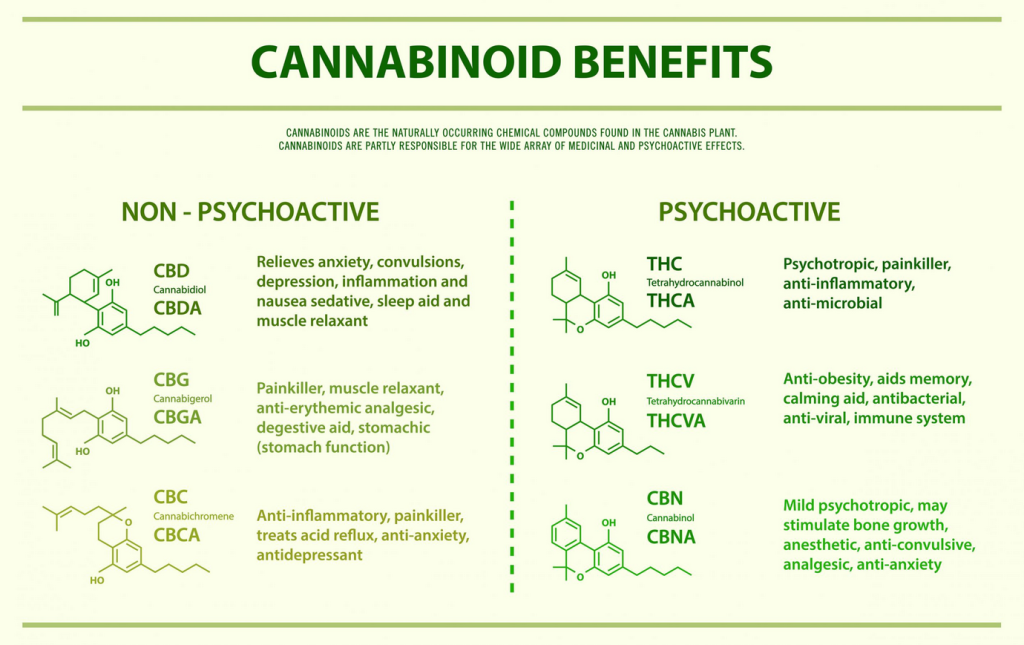Anxiety – Understanding the Differences: Hemp, CBD, THC, CBG, CBN, and Why Cannabinoids Matter
Cannabinoids are a diverse group of chemical compounds found in the genus Cannabis, which includes cannabis plants such as hemp and marijuana. These compounds interact with the body’s cannabinoid receptors, influencing various physiological processes. Among the many cannabinoids, hemp, cannabidiol (CBD), tetrahydrocannabinol (THC), cannabigerol (CBG), and cannabinol (CBN) are some of the most well-known and studied. Understanding their differences is essential to grasp why cannabinoids matter for health, industry, and legal considerations.
 What is Hemp?
What is Hemp?
Hemp is a variety of the Cannabis sativa plant species that is grown specifically for industrial and commercial uses. Unlike marijuana, hemp contains very low levels of THC—the psychoactive compound responsible for the “high” effect—typically less than 0.3% by dry weight. This low THC level makes hemp legal to grow under federal regulations in many countries, including the United States. Hemp is cultivated for its versatile applications, including hemp stalks used for bast fiber in textiles and animal bedding, hemp seeds (or hemp hearts) for nutritional food products, and hemp oil for dietary supplements.
Cannabidiol (CBD)
CBD is a non-psychoactive cannabinoid predominantly found in hemp plants. It has gained popularity due to its potential therapeutic uses,

such as managing chronic pain, reducing anxiety, and aiding in neurological disorders. Unlike THC, CBD does not produce psychoactive effects and is often extracted from hemp to create pure CBD products like oils, tinctures, capsules, and topical creams. The Food and Drug Administration (FDA) regulates some prescription cannabidiol formulations, such as Epidiolex, which is approved for treating certain types of epilepsy.
Tetrahydrocannabinol (THC)
THC is the primary psychoactive compound in cannabis plants, especially in marijuana, which contains higher concentrations of THC than hemp. THC binds to cannabinoid receptors in the brain, producing psychoactive effects such as euphoria and altered perception. It also has medical uses, including appetite stimulation and nausea control, particularly in chemotherapy patients. However, THC is classified as a controlled substance in many jurisdictions due to its intoxicating properties and potential for substance abuse.
Cannabigerol (CBG)
CBG is a lesser-known cannabinoid often referred to as the “mother cannabinoid” because it serves as a precursor to other cannabinoids like THC and CBD during the cannabis plant’s growth. While present in lower concentrations than CBD and THC, CBG is gaining attention for its potential medical benefits, including anti-inflammatory properties, antibacterial effects, and possible neuroprotective roles. Ongoing research is exploring CBG’s therapeutic applications, but clinical trials are still limited.
Cannabinol (CBN)
CBN is a cannabinoid that forms as THC degrades, often found in aged cannabis. It is mildly psychoactive but less so than THC. CBN is being studied for its potential sedative effects and may contribute to sleep aid formulations. Like other cannabinoids, it interacts with cannabinoid receptors but with distinct pharmacological effects.
Why Cannabinoids Matter
Cannabinoids interact with the body’s endocannabinoid system, which regulates functions such as mood, anxiety, pain sensation, appetite, and immune response. The varying effects of cannabinoids like CBD, THC, CBG, and CBN highlight their potential in medical use, including managing chronic pain, neuropathic pain, multiple sclerosis symptoms, and epilepsy. However, the legal status of these compounds varies widely based on their source (hemp vs. marijuana), THC content, and intended use.
Moreover, the hemp industry has expanded significantly due to the versatility of hemp products, from fiber crops to food products and dietary supplements. Regulatory bodies such as the Food and Drug Administration play a crucial role in overseeing the safety, efficacy, and labeling of cannabinoid-derived products.
Understanding the distinctions among hemp, CBD, THC, CBG, and CBN is vital for consumers, healthcare providers, and policymakers to navigate the complex landscape of cannabis-derived products, ensuring informed decisions about medical use, recreational use, and industrial applications.
Do you have questions about these compounds and which is best for you? Contact our customer care line!
